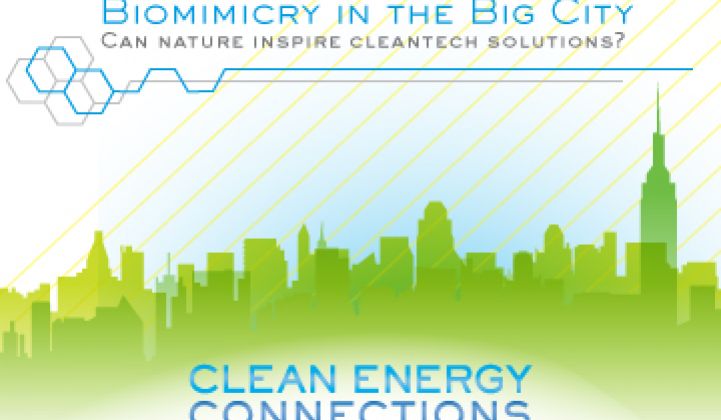From the earliest airplanes to Velcro, human innovation has often been inspired by the natural world. Nature has spent the past 3.8 billion years perfecting its biological designs, so it’s no surprise that humans can learn a thing or two from them. Only recently, however, have entrepreneurs and engineers begun to explore the potential of observing nature to advance clean-energy technology.
Solar One and the New York City Accelerator for a Clean and Renewable Economy (NYC ACRE) at Polytechnic Institute of New York University will take up this topic in their panel “Biomimicry in the Big City: Can Nature Inspire Cleantech Solutions?” on Thursday, November 3, at 7 p.m. in Manhattan. To attend, please visit Clean Energy Connections.
The panel, moderated by Reena Jana of SmartPlanet, will include Chris Garvin, a Partner with Terrapin Bright Green; Mark Dorfman, a consulting scientist at Biomimicry 3.8; Pat Sapinsley, a venture partner at Good Energies and president of Build Efficiently, LLC; and Sam Cochran, co-founder, CEO and chief design officer of SMIT. Opening remarks will be delivered by Miriam Pye, Senior Project Manager of Manufacturing Technology Development for the New York State Energy Research and Development Association (NYSERDA), where she focuses on industrial productivity and biomimicry.
The evening's discussion will explore how companies are utilizing biomimicry to design, build and operate innovative cleantech technologies. The expert panel will debate the benefits and challenges of this new collaborative model and dive into the best strategies for success.
Although the topic has relevance across the globe, the discussion will focus on the potential of biomimicry in New York City’s cleantech industry. Cochran’s company SMIT (which stands for Sustainably Minded Interactive Technology) is based in Brooklyn and has developed a solar energy product that looks and behaves like natural ivy on buildings.
The other panelists will each bring a unique perspective to the discussion. Dorfman has an extensive green chemistry background and works as a green chemistry naturalist at the Biomimicry Guild, which is now rebranding as Biomimicry 3.8. Sapinsley approaches the topic as both a trained architect and a venture capitalist. Prior to her work at Good Energies, she was principal of Sapinsley Architecture, which she started in 1982. Garvin manages consulting engagements for green building think tank Terrapin Bright Green, which has been hired by NYSERDA to expand biomimicry opportunities in New York State. He also serves as a project lead for many projects of Cook+Fox Architects and lectures frequently on sustainable design.
“Biomimicry in the Big City” is the fifth event in the Clean Energy Connections series, which was developed in partnership with the Energy $mart Communities program of the New York State Energy Research and Development Authority and sponsored by NYSERDA, Loeb & Loeb LLP, and Con Edison’s Commercial & Industrial Energy Efficiency Programs.
If you can’t make it to the Jerome L. Greene Performance Space in Manhattan, we will be streaming the discussion live, and your comments can be part of the event. Leave your questions in the comments below this article to have them asked to the panelists. Visit this article again on November 3, 2011 at 7:00 p.m. ET to watch a live stream, or visit our homepage. You can also tweet your questions to @CleanECnyc with the hashtag #cleanNRGx during the panel discussion.



